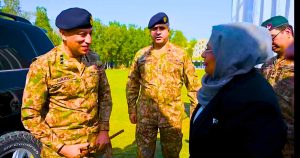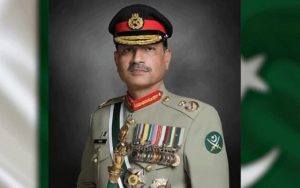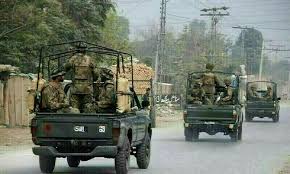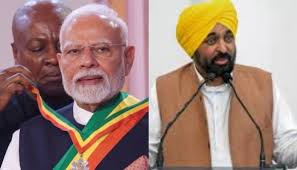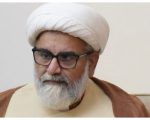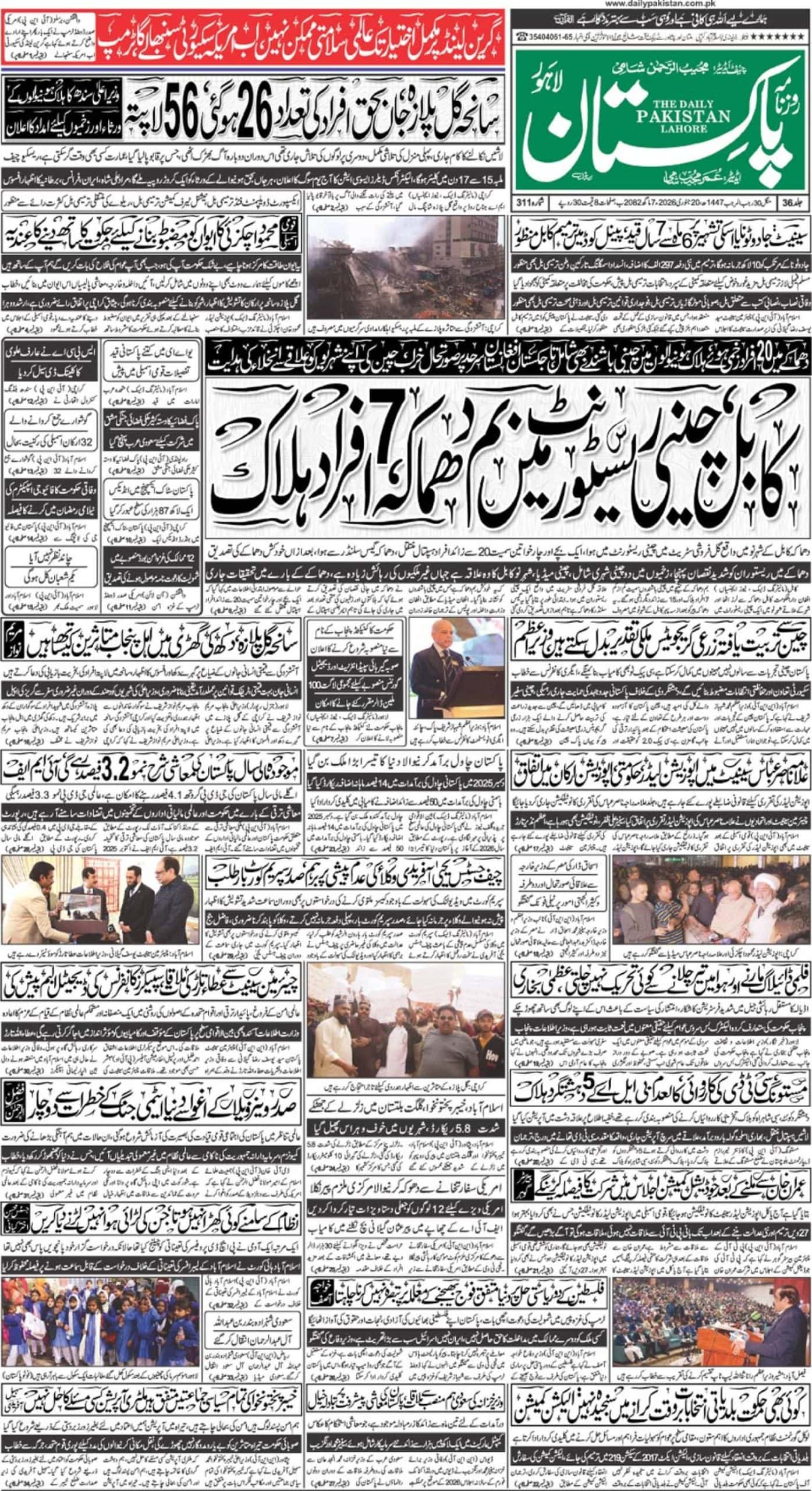“Forrestal was the man with the executive responsibility in the Truman administration who dared to draw the line in the proverbial sand and say that the best interests of America, the Free World and Jews everywhere dictated that Zionism should not be allowed to determine U.S. policy for the Middle East.” – Alan Hart, BBC correspondent and author
James Vincent Forrestal was a most upright, brilliant and great American patriot. He was the first ever Secretary of Defense of the United States. He was born in 1892 and died, under mysterious circumstances, in 1949. His death was ruled “suicide” but there was always a suspicion that he had been assassinated.
It was alleged that Forrestal had jumped to his death from a window of the 16th floor of the blighted Bethesda Naval Hospital. This is the same hospital in which the doctors were to tamper with the brain of John F. Kennedy in 1963 to destroy evidence of a fatal frontal shot. It is believed that Forrestal had been confined there on the orders of the then-President Harry S. Truman. This in itself is a very odd thing. Truman was a Freemason, and had, by accepting a substantial sum of Zionist money to get reelected, surrendered to Zionists.
James Forrestal joined William A. Read and Co. as a bond salesman in 1916. In 1923 the company changed its name to the now world famous Dillon Read& Co., and Forrestal was made a partner in the firm in view of his brilliance, hard work and honesty. In 1926 he was made vice president of the firm, becoming its president in 1937. Forrestal was thus a rich banker by then. He was non-partisan in politics and, though he had little interest in politics, he was a patriot. It was out of his patriotism that, sensing the possibility of U.S. becoming involved in the European war, he, in mid-1940, became an administrative assistant to President Roosevelt. Forrestal was a rich and an apolitical man, and had no need to do so. He was part of a team of advisors whose number varied from four to six.
On August 22, 1940, Forrestal was appointed assistant secretary of the Navy. He was not the first choice but was appointed after William S. Donovan, later to head OSS, and another person had declined the position. Forrestal was responsible for mobilizing naval resources for the impending war. The Secretary of the Navy Frank Knox died suddenly on April 28, 1944. As a result, James Forrestal got appointed Secretary of the Navy under Roosevelt. Roosevelt died in 1945 and Harry S. Truman, his vice president became president. The secretary of the navy was a most powerful position as the U.S. navy had played a key role in the U.S. victory in WWII. In the year 1947 the National Security Act was passed that, apart from setting up the CIA, reorganized the armed forces under a single Department of Defense. A secretary of defense had to be appointed, and only after Truman’s first choice, Robert Patterson, refused the position, was Forrestal appointed. Patterson was Secretary of War, a position that no longer existed.
Two concerns became most important for Forrestal. Firstly, Forrestal stood against Communism and desired the containment of the Soviet Union. Half of Europe had been handed over by FDR and Eisenhower to Stalin’s Soviet Union bringing Christians under the ruthless rule of those who hated Christianity. The Bolshevik Revolution was essentially a Jewish coup d’état, led by “international” Zionists and sections of Russian Jewry. The other issue that cropped up after he assumed his new position, and became intractable, was the issue of Palestine. And here too the Zionists and the Jewish community in the U.S. and elsewhere, were involved.
In 1947 a committee known as UNSCOP (UN Special Committee on Palestine) had recommended “the partition of Palestine.” Concurrent to this two important developments, potentially of cataclysmic importance, were taking place. Douglas Reed writes: “First, hundreds of thousands of Jews from Russia and Eastern Europe were being smuggled across Western Europe to invade Palestine. Second, the approach of the American elections was being used by the Zionists as a means to set the rival parties there bidding against each other for Zionist support and thus to ensure that the decisive American vote in the United Nations would be cast for the invasion.”
General Frederick Morgan of Britain, who headed the UNRRA, had found out that the organization was being used “as an umbrella to cover the mass movement of Jews from the eastern area [of Europe] to Palestine.” General Morgan publicly stated twice that “a secret organization existed for a mass movement of Jews from Europe, a second Exodus.” As noted by Douglass Reed: “In this way a new war was being cooked over the embers of a dying one.” These Jews had nothing to do with Palestine, nor were they displaced persons. They had not been driven from Germany and were not “displaced persons”. And they had never lived in Palestine. Reed points out: In fact, these were, once more, the Ostjuden, the Chazars, being driven by their Talmudic masters to a new land for conspiratorial purposes.” Nobody was allowed to stand in the way of the Zionist conspiracy, and therefore, General Morgan had to face dismissal as a price for his integrity. His own government was subject to severe Zionist pressure.
Like General Morgan, James Forrestal, foresaw the disaster in the making and tried to avert it. Reed writes: “In November 1947 the Zionists wanted a ‘partition’ vote and in May 1948 they wanted recognition of their invasion. The presidential election was due in November 1948, and the essential preliminary to it, the nomination contest in June and July 1948. The party-managers instructed Mr. Truman that re-election was in the Zionist gift; the opposition candidate received similar advice from his party-managers. Thus the election took the nature of an auction, each candidate being constantly under pressure from his organizers to outbid the other in the invasion of Palestine.”
Alan Hart points out that as a leading investment banker, James Forrestal understood: “(1) that the U.S. would have to generate wealth to fund the Marshall Plan in the reconstruction of devastated Western Europe; and (2) that in the wealth creation process to put capitalism back on its feet in Western Europe and Britain, the uninterrupted and escalating flow of Arab oil at the cheapest price was the most critical factor. And in a word, OIL, was the prime source of Forrestal’s interest as Secretary of Defense in the Palestine problem and how it should be handled by the administration he served.” Thus to keep the oil flowing was a responsibility that fell on the shoulders of the State Department headed by General George C. Marshall and the Department of Defense headed by Forrestal.
Forrestal began meeting important politicians of the country in an attempt to keep Palestine out of the internal politics of the U.S. In doing so he was inviting the wrath of the Zionists. But he was a patriot and an honest man with foresight. Since Forrestal kept a diary and since his dairies were published posthumously (after editing), it is known whom he met and what conversation took place. He met Howard McGrath, National Chairman of the Democratic Party. He told McGrath: “No group in this country should be permitted to influence our policy to the point where it could endanger our national security.” McGrath told Forrestal that there were two or three pivotal states that could not be won without the support of“people who were deeply interested in our handling of the Palestine question.”Forrestal replied: “I would rather lose those states in a national election than run the risks that might develop in our handling of the Palestine question.”
Forrestal, though depressed by McGrath’s reply, met him again and shared with him a secret CIA report on Palestine. However, McGrath then revealed to Forrestal that “Jewish sources were responsible for a substantial part of the contributions to the Democratic National Committee” and that these sources, in return, expected the Democratic Party to support the Jews on the Palestine issue. In fact, the Jews wanted the “United States to do its utmost to implement the partition decision” and to use force if needed, once the partition had been approved by the UN. Disappointed by McGrath, Forrestal decided to contact the Republicans.
Before contacting the Republicans, he met with Jimmy Byrnes, who had resigned as Foreign Secretary out of frustration. Byrnes told Forrestal that the Morrison-Grady Plan (a joint Anglo-American Plan put forward in 1946 which stood for a unitary federal trusteeship of Palestine) had been sabotaged by David Niles in the White House. This sabotage had placed the British in a very awkward situation. We have, in a previous article, mentioned that Roosevelt was surrounded by Jewish-cum-Communist advisers, and that Niles was one of those. Apparently Niles had told Truman that if he supported the Morrison-Grady Plan, the Republicans will support the Zionist position on Palestine! Niles was the son of Russian Jewish immigrants and was one of the two Roosevelt advisors (out of scores) retained by Truman.
Forrestal met Senator Arthur Vadenberg, an influential Republican leader, and then, three days later, New York’s Republican Governor Thomas Dewey. He told them that the Palestine issue should be taken out of party politics because it could affect the security of the U.S. Vadenberg agreed with Forrestal in principle but pointed out: “There is a feeling among most Republicans that the Democrat Party has used the Palestine question politically and the Republicans feel they are entitled to make similar use of the issue.” Dewey also agreed with Forrestal in principle but felt that a) the Jewish community had adopted an intemperate attitude towards the Palestine issue, and b) the Democrats would not relinquish the advantage of Jewish vote.
While Forrestal was busy in his attempts to have the two parties adopt a common position on Palestine keeping the U.S. security interests in view, the Zionists realized that he had to be checked, and possibly eliminated, or neutralized, at least politically. Roosevelt’s son visited him. In his diary Forrestal noted: “He made no threats but made it very clear that the zealots in the cause had the conviction to upset the government policy on Palestine. I replied that I had no power to make policy but I would be derelict in my duty if I did not point out what I thought would be the consequences of any particular policy which would endanger the security of this country. I said I was merely directing my efforts to lifting the question out of politics, that is, to have the two parties agree they would not compete for votes on this issue.” By so doing Forrestal was countering the tactics of the Zionist Jews of the U.S. And Roosevelt Jr., like his father, had the deepest loyalty towards the Jews.
Roosevelt’s son, who, in the words of Douglas Reed, was “an extreme Zionist partisan”, told Forrestal that the Democrats would lose the elections if the matter was to be taken out of party politics. Forrestal then told Roosevelt’s son that he knew that the three states of New York, Pennsylvania and California could be lost but “I thought it was about time that somebody should pay some consideration to as to whether we might not lose the United States.” That visit was most likely meant to assess what exactly Forrestal’s thoughts on the issue were at that time, because, on that very day Forrestal had lunch with Bernard Baruch. Baruch was a deep agent of the High Cabal and a most influential man in U.S. politics. He had spent thirty-five years “advising six Presidents”, from Wilson to Truman. After WWII, he had been entrusted the responsibility of shaping “a workable plan for international control of atomic energy.”
Douglas Reed writes (emphasis by Reed): “Mr. Baruch, earlier an opponent of Zionism, was now so zealous in the cause that he advised Mr. Forrestal ‘not to be active in this matter … I was already identified, to a degree that was not in my own interests, with opposition to the United Nations policy on Palestine.’” Douglas Reed gives his assessment: “Ominous words for Mr. Forrestal! The annals here record for the first time a specific intervention by Mr. Baruch in high affairs, and its nature. His counsel was that Mr. Forrestal, a Cabinet officer, consider his own interests, which was endangered; until that time Mr. Forrestal as a responsible Cabinet officer had considered only the interest of his country.” Douglas Reed notes: “Mr. Forrestal does not say whether he saw in this advice anything threatening; his allusion to Mr. Roosevelt on the same day shows that the thought of ‘threats’ was on his mind.”
From then on James Forrestal was a marked man. He did try to achieve what he wanted to but failed. He was targeted by the Zionist media and propaganda machinery. Douglas Reed writes: “I first went to America early in 1949 and was perplexed by the venom of the attacks, in the press and radio, on one Mr. James Forrestal, Secretary for Defense. I knew nothing of him but his name, and the part he played in this affair [Palestine issue] was then entirely unknown to the public. Nevertheless they read or heard daily that he was insane, a coward who had left his wife to be attacked by a burglar, a tax defaulter and all manner of other things.” Reed points out that the American libel laws are liberal and differ from state to state. “Even a successful action may not bring redress. Hardly any limit is set to what may be said about a man singled out for defamation; the slanders are printed in language that incites mob-passions and when broadcast are uttered in rabid accents that recalled to me the primitive African tribespeople in moments of catalepsy.” Important journalists such as Walter Winchel, who was Jewish, and Drew Pearson, who was a non-Jewish Zionist, had attacked Forrestal in their syndicated columns. The honest and upright Forrestal, who was doing his patriotic duty was subjected to defamation by the Zionists. He had become a target to be destroyed.
President Truman’s somewhat unexpected November 1948 reelection was made possible by Zionist support, and he went along with the partition of Palestine as desired by his Zionist benefactors. The Zionists were now after Forrestal’s blood and wanted him out of the Truman cabinet, and possibly dead. The propaganda against him that declared Forrestal“insane”, as recorded by Douglas Reed, seems to have been planned with the objective of taking him to a mental hospital and then getting rid of him. Forrestal thought he had an understanding with Truman that he would resign on May 1, 1949 but, to his dismay, on March 4, 1949, Truman replaced him with his fund-raiser Louis Johnson, a man whom Forrestal neither liked nor respected. Truman must have done it under Zionist pressure or propaganda.Johnson must have been close to Zionists to do his successful fundraising.
David Martin, the man who first established that Forrestal was indeed murdered, writes: “The unexpected acceleration of the timetable for Forrestal to step down has been attributed to Truman’s realization that he was in the throes of some sort of emotional breakdown and therefore had to be replaced quickly.”Who told Truman that Forrestal was not normal anymore? David Martin writes: “That argument, as we shall see, falls under the category of what we might call Forrestal-destruction propaganda. By the best evidence available, up until that day Johnson’s swearing in, Forrestal seemed to be perfectly normal. He also seemed to be quite normal before he went out the 16th floor window of the Bethesda Naval Hospital, some seven weeks later.” The newspapers reported that he had committed suicide. Forrestal’s brother, Henry Forrestal, vehemently disagreed with the suicide verdict.
Three books were written on the Forrestal’s death prior to David Martin’s interest in the matter. Two of these, which propagated the suicide version of Forrestal’s death, were heavily publicized, whereas a third one, by Cornell Simpson, had been ignored in the mainstream media. Simpson had concluded that Forrestal had been murdered by the Communists. Many Jews were simultaneously Communists and Zionists. It is therefore no wonder that his book was sent into oblivion. After reviewing the books, Martin concludes: “By now it should be clear to the reader that authors of well publicized and distributed books in the United States on James Forrestal have taken no oath to tell the truth, the whole truth, and nothing but the truth.” The unpublicized book, by author Cornell Simpson, who interviewed James’s brother, quotes him as saying that James Forrestal was “the last person on earth to commit suicide.” He was absolutely certain that his brother did not commit suicide.Yet, his death has been treated in the mainstream media and in the two heavily publicized books, as a suicide!
So what had happened to James Forrestal? An interview of Matthew J. Connelly, the appointments secretary to Harry S. Truman sheds important light on the matter. The interview was given for the Truman Library Oral History. Connelly revealed that he had been contacted by Forrestal who suspected that his phone lines were bugged and that he was under surveillance. Connelly had the Secret Service check out things and they came back with the result that Forrestal’s suspicions were unfounded. So Connelly told President Truman that Mr. Forrestal “might be a little bit wrong.” President Truman then asked Connelly what he thought to which Connelly replied “I think Mr. Forrestal is cracking up.” So the President then suggested that Forrestal should be sent to Key West for a vacation.
When Forrestal went to Key West he had the same feeling. Connelly states: “He thought that the same things were happening, that people were simply annoying him, and he felt he was under surveillance down there, he felt that he was being watched, and in other words, he was being personally persecuted. So as a result of that, we had him quietly removed to Bethesda Hospital in Washington.” He does not say explicitly that it was done under the orders of President Truman but uses the word “we”, whatever that means. It does seem to imply, in view of the decision to send Forrestal to Key West, that President Truman might have been involved in the decision to send Forrestal to Bethesda. It is also important to note that David Niles, the Jewish advisor disliked Forrestal intensely. We now know that the Jewish Anti-Defamation League (ADL) spies on people, and has even been convicted. Therefore, Forrestal’s suspicions may not have been as unfounded as Connelly thought.
It is important to note that twenty-eight Jewish intellectuals in the U.S., including Albert Einstein, Hannah Arendt, and others, wrote a letter to the New York Times on December 4, 1948, warning the country of the dark side of Israeli leaders. The letter pointed to the Deir Yassin massacre of Palestinians by Menachim Begin’s terrorist organization Irgun. It stated: “In the light of the foregoing considerations, it is imperative that the truth about Mr. Begin and his movement be made known in this country.It is all the more tragic that the top leadership of American Zionism has refused to campaign against Begin’s efforts ….” David Martin raises the question: “Would men like Menachim Begin and his followers have hesitated at assassinating the most popular, outspoken, and powerful critic of the nascent state of Israel in the United States if given the opportunity? It certainly did not stop them when the perceived obstacles to Israeli ambition were members of the British or the Swedish leadership and nobility. Would someone like David Niles have used his power and influence to assist the assassins, and did he have sufficient power and influence to see that the deed was accomplished?” The answer to these questions given by Martin is in the affirmative.
It is extremely significant that someone from the White House determined who should or should not visit James Forrestal in his Bethesda room. Those whom he loved were not allowed to meet him while those whom he disliked seemed to visit his room. One of the visitors was the unsavory Lyndon B. Johnson, a crypto Jew, who was a murderer, and who had no business visiting James Forrestal. Martin asks: “Could LBJ have been playing something of a foot-soldier role for the orchestrators of Forrestal’s demise?” He gained entrance “against Forrestal’s wishes.” His own successor, whom Forrestal disliked, also visited him. His closest friend Frederick Eberstadt was never allowed to visit Forrestal!
The media reported that Forrestal had committed suicide by tying the sash from his bath robe around his neck from one end and to the radiator at the other end, and hanging outside the window. The reports implied that either the knot at the radiator end got untied or the sash broke under his weight and he fell landing on a third floor passageway roof! The story does not lend easily to credence but with the media Wurlitzer, the public is likely to accept things uncritically. The public mind had been prepared over a period of time by slandering him as “insane”. The sash was around his neck when his body was found at 1:50 a.m. with his skull crushed, his abdomen open, and leg severed. Although the Navy constituted a board to investigate the death on May 23, the day after he died, the report of the board was not made public. The board completed its investigation in eight days and submitted its report on May 31. The actual report was never made public! A summary of 17 lines was made public on October 11, four months and 11 days later. The delay was never explained.
The actual report was kept secret for 55 years until David Martin, in his third attempt, was able to get it in 2004 under the Freedom of Information Act. That the Navy kept the report secret for 55 years gives credence to suspicions of foul play. And it points to very heavy pressure on the Navy by superior authorities to keep the report under cover. In the Truman era the only group that could exert such a pressure were Zionists around him. And astonishingly, nowhere does the Navy report say that James Forrestal committed suicide.
It had been stated in the publicized books on Forrestal’s death, that just before he allegedly jumped out of the window, Forrestal was transcribing a morbid poem from an anthology of world poetry. When David Martin forced the authorities to provide him with a copy of what Forrestal had transcribed or copied, he was astonished to find that it was not in his handwriting! So the story about him copying a morbid poem prior to committing suicide was made up. He was not copying the poem. The story of his copying a morbid poem was made up to lend credence to the fiction of suicide by a depressed morbid man. The perpetrators had never thought that someone someday will check up on the handwriting. In fact, the Navy board should have done that. But they did not. Why this oversight? Further, this raises the question, asked by Martin: were the well-publicized books on Forrestal’s death meant to draw people’s attention away from the real perpetrators? For instance, the daughter of a key witness, corpsman Edward Prise, cited by these authors as stating that Forrestal had refused a sedative because he wanted to read, wrote an email to David Martin in 2017. She stated that right until his death in 1991, her father “lived in fear of something happening to him because of information he knew about the case.” So there was something dark and menacing surrounding the death of James Forrestal.
David Martin writes: “The first person to enter former Secretary of Defense James Forrestal’s fully-lighted room at the Bethesda Naval Hospital after his fatal, late-night plunge from a 16th floor window saw broken glass on his bed. The Navy photographer who took pictures of the room at some unknown time later took a picture of broken pieces of what looks like either a petri dish or an ashtray on the ornate carpet in the room, but in the photograph, the bed had nothing but a bare mattress and a couple of bare pillows on it, not even the turned-back bed covering that the nurse who saw the glass on the bed described. The two photographs of the room, taken from different angles, also failed to show either the slippers under the bed or the razor blade beside it that the nurse saw. In fact, the barren room with nothing on the bed or any of the furniture, no reading or writing material, no clothing, no spectacles, no pipe, tobacco, or lighter, in short, no sign that James Forrestal or anyone else had, shortly before, been a patient there, is clearly not the room as described by the nurse, Lieutenant junior grade Dorothy Turner.”
Obviously, the room had been cleaned up by unspecified persons on the instruction of unspecified individuals. David Martin notes: “When we look carefully at the windows in the photographs of the room we see that bright sunlight is streaming in. The sun is about as high in the sky as it gets in May at the latitude of the Washington, DC, area. One can surmise that at least eight hours had passed between Forrestal’s fall and Corpsman McClain’s photographic work. Why was it necessary to let so much time pass?” And the only reason for the cleanup that comes to mind is that the room must have shown signs of a struggle of some kind. Why were the bedsheets gone? Where were his belongings? Why were they removed? The removal of things from the room indicates foul play and nothing but foul play. Those who cleaned up the room must, in their hurry, have overlooked broken glass that was on the ornate carpet in the room. Was an autopsy carried out to determine if Forrestal was dead prior to being thrown out of the window? Or was he thrown out alive?It is highly important that the Navy board report does not have an autopsy report! It is also important to note that while the cord around his neck was in the exhibits of the Navy report, the bathrobe was not there! So was it the bath robe sash or something else? And where did the robe go?
Throwing men who pose a threat to powerful forces, out of windows of multistoried buildings is a standard assassination technique. In his book “The World Order”, Eustace Mullins mentions Laurence Duggan, an intimate of the spy Alger Hiss and Harry Dexter White, who suddenly died when he was supposed to testify in a Congressional investigation of Hiss and others. “He fell out of a twelfth story window…. In his haste to get to window, he tore of one shoes, and left the office in shambles, as he fought his way across it. The verdict was ‘suicide’.” Hiss was protected by the Zionists, and therefore, it is logical to assume that an assassination wing of the Zionists murdered Duggan. Duggan dies on December 20, 1948, five months and two days before Forrestal. The same was the most likely case with Forrestal. No wonder Forrestal’s room was cleaned up.
The CIA Assassination of Kennedy’s Beloved Mary Pinchot Meyer


